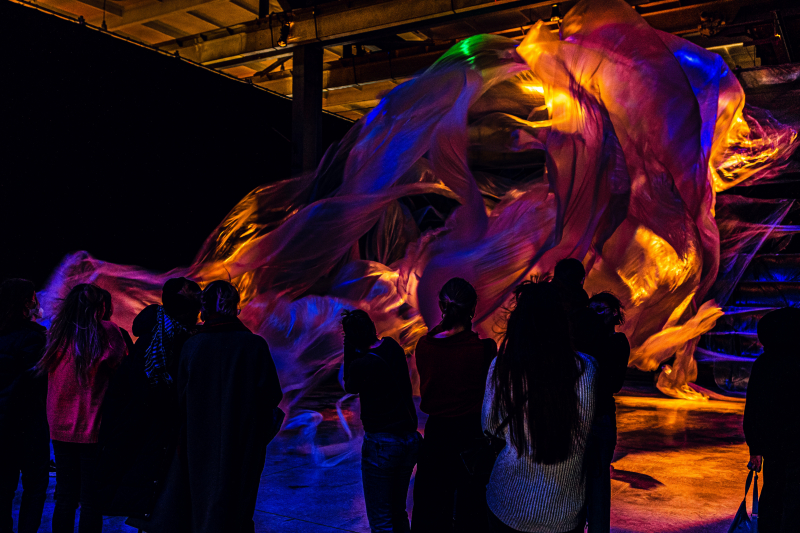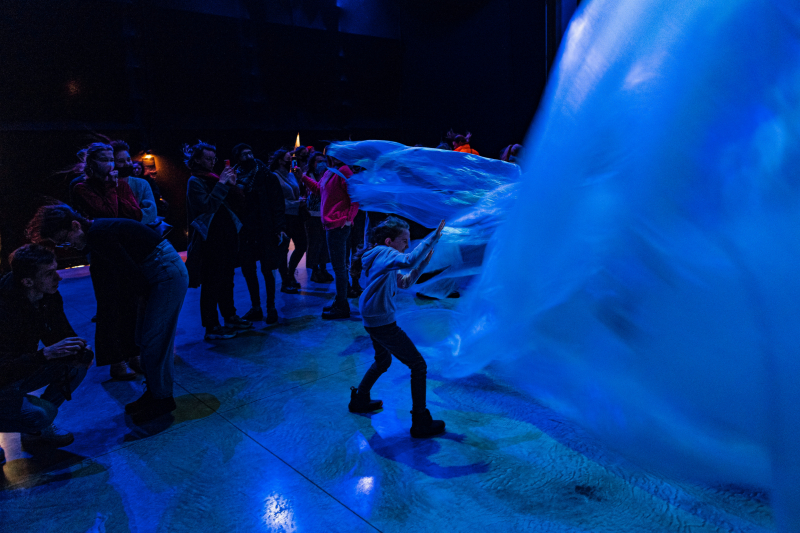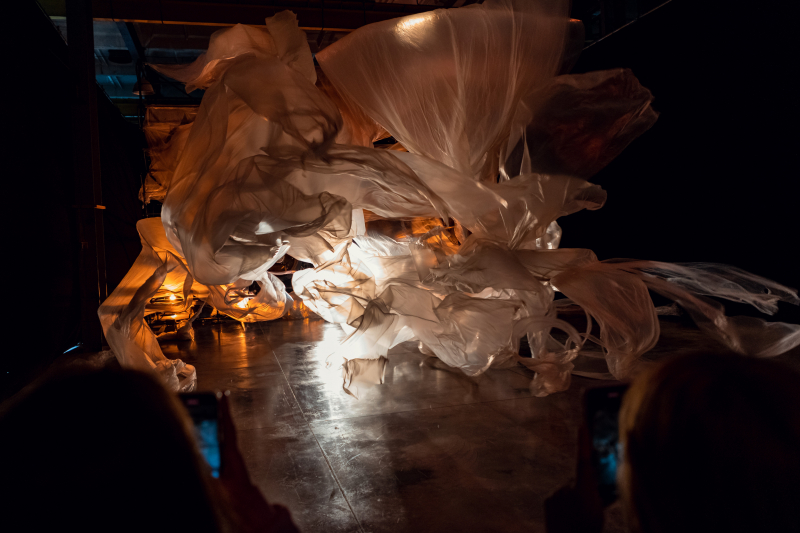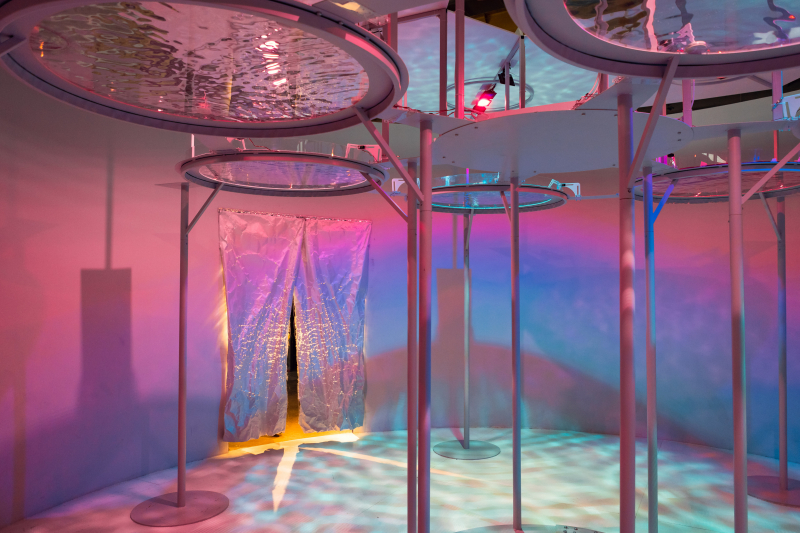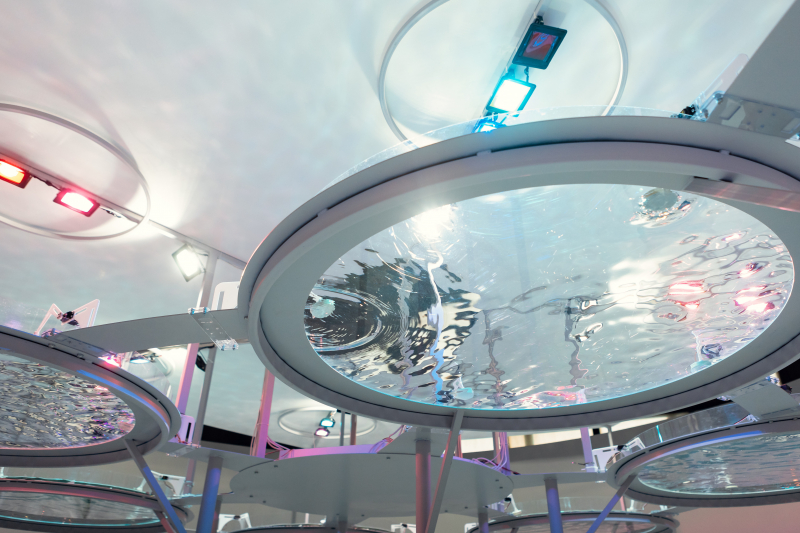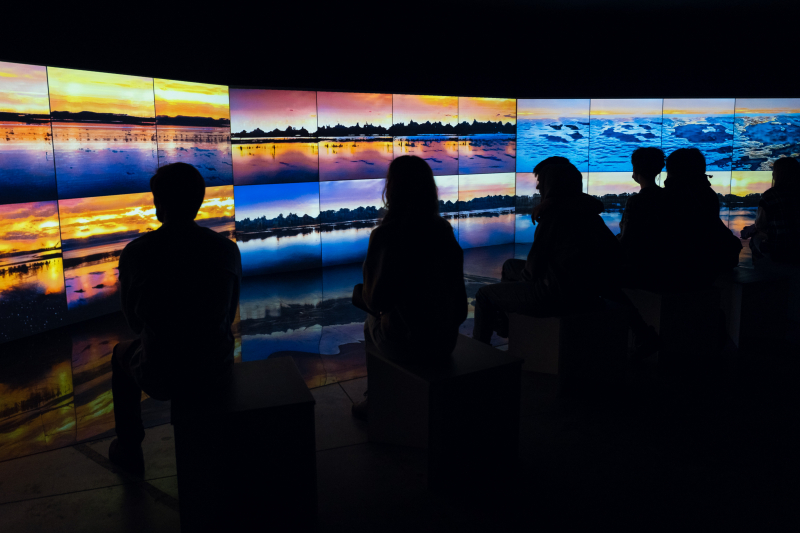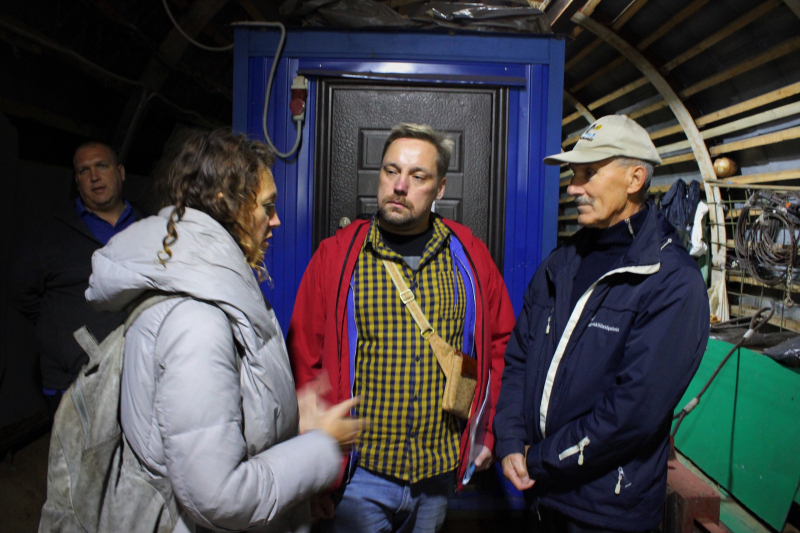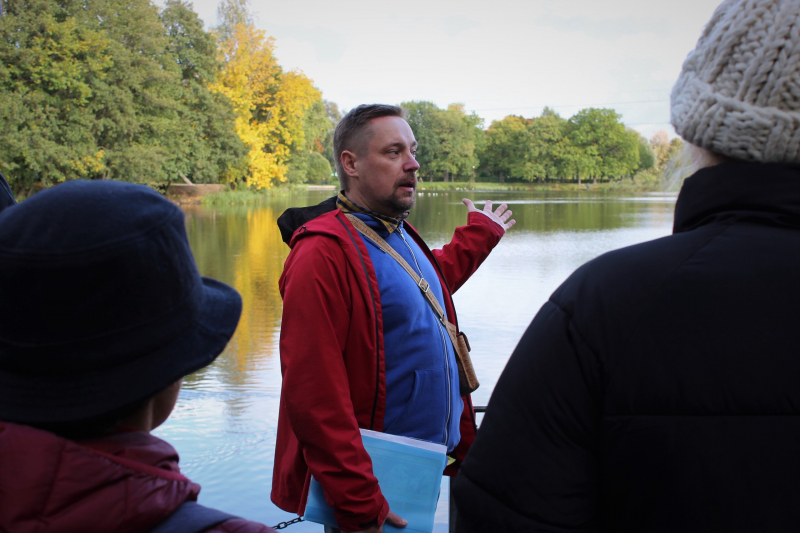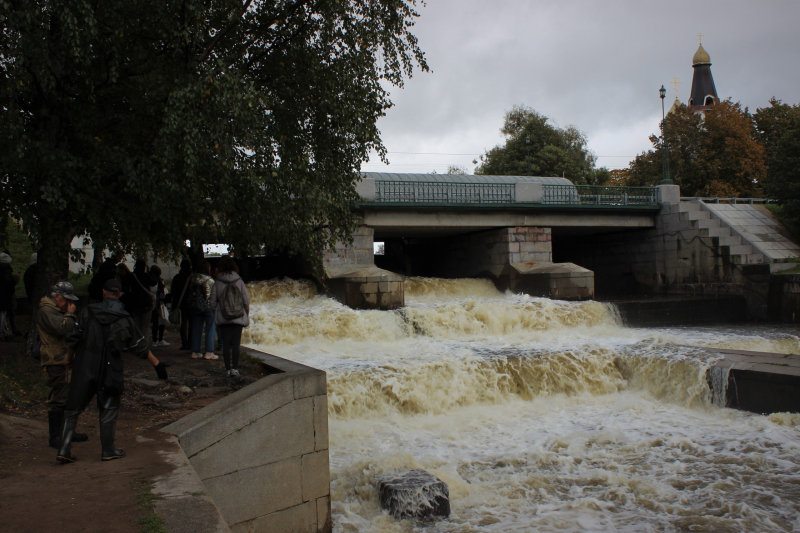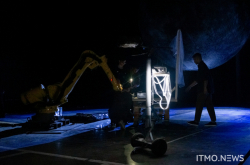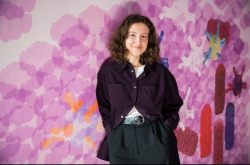Humans and water
The cross-cutting theme of the Hydra exhibition is the relationship (and interdependence) between humans and water resources, as well as the environmental impacts associated with water exploitation. This is especially true for St. Petersburg, one of the major port cities in Europe, that gets to experience both the advantages and the disadvantages (e.g., constant flood risks) of being built around the water. In this sense, Hydra stands for both the water element and the mythical creature with multiple heads that symbolizes the ever-increasing environmental hazards – and, at the same time, refers to the city’s classical legacy and its historical memory.
“Starting out, we tried to collect more water-related projects because water is the main element for St. Petersburg. Our city is indeed a place where historical and cultural heritage meets ecology. Not only its engineering triumphs but also its historical river channels and near-water areas are protected by the city. In fact, St. Petersburg is of an artificial nature: it’s a city of water which it holds back by its granite embankments and is in a constant race with,” Lydia Gumenyuk, one of the curators, elaborates on the key concept of the exhibition.
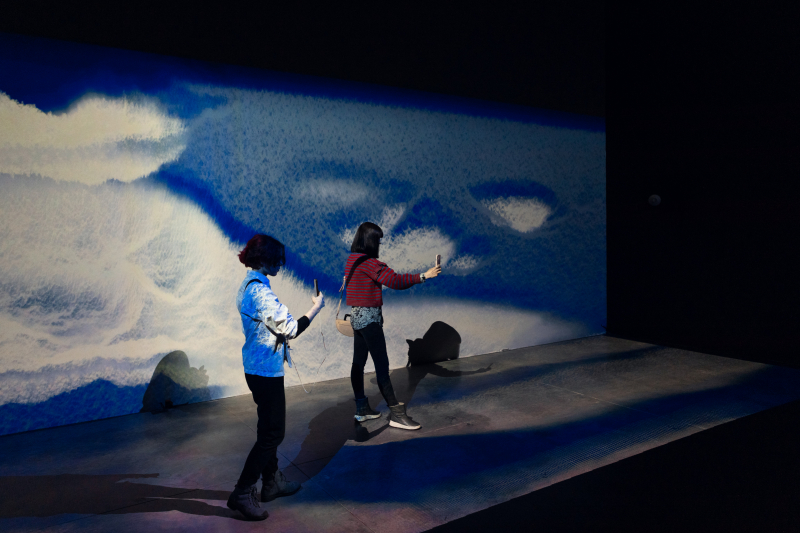
Hydra. New Media Art in the Context of Eco-Anxiety. Photo by Dmitry Grigoryev / ITMO.NEWS
Following this main concept, most of the exhibits reflect on the topic of water in one way or another. For instance, the Whispers show by Light Society (Aliya Orr and Sakchin Bessette), which opens the exhibition, places visitors into the very eye of a hurricane, thus bringing up the pressing issue of plastic pollution in bodies of water. The French artist Maotik (Mathieu Le Sourd) designed an interactive ocean simulation that revives the changes in wind forces and waves heights throughout the world in real-time. His work invited visitors to take a digital trip to the coasts of the Mediterranean Sea or the Pacific Ocean, or the Gulf of Finland. And the Russian media artist Victor Polyakov put together a sophisticated installation made up of several water tanks, wave machines, and light sources to create a fantastic visual effect as if the audience could see light rays coming down through the water.
Other authors chose to focus strictly on the environmental agenda. The artwork of Jana Winderen, a Norwegian artist with an extensive background in ecology and marine ecosystems, refers to the dead zones or oxygen minimum zones in the Baltic Sea – one of the most polluted waters in the world. The installation includes underwater sounds produced by mammals, including humans, and aquatic inhabitants.
The joint project of Robertina Šebjanič and Gjino Šutić opens a dialogue about the chemical pollutants and their effects on the aquatic environment by presenting a video experiment featuring microorganisms dying in medical solutions. The Russian art duo Andrey Blokhin and Georgy Kuznetsov, otherwise known as the Recycle Group, used recycled hydro-insulating films to create an artificial coating that imitates the dirt imprinted with shoeprints. This way, the artists lead the audience into the future where no natural materials are left and let them experience the artificial nature of the world. And The Day We Left Field project by TUNDRA reflects on the natural environment and its place in today’s digital world.
The organizers of the exhibition prepared an eventful program. Artists, art curators, biologists, geologists, historians, and other specialists came together to talk about the effect of climate change in the Arctic and the Antarctic, the threats to seals, and other environmental issues. Art & science became another major theme of the exhibition. Artists and curators, as well as various officials and directors, had a lively discussion about whether St. Petersburg can be considered the capital of art & science. One of the panel experts was Aliya Sakhariyeva, the head of ITMO’s Art & Science Center.
The roundtable “Is St. Petersburg the capital of art & science?” (in Russian)
Water Machineries
For ITMO’s Art & Science students, the exhibition was the chance to present their joint project titled Water Machineries, which grew out of a six-day workshop that was organized by ITMO’s Art & Science Center and the University of Zurich last September. The project was an attempt to investigate the relationships between the city and the bodies of water surrounding it, given the socio-cultural and political context, and flood prevention complexes.
“In our project, we decided to focus on dams and flooding and, more precisely, we also covered the exploration of the Gulf of Finland and the dichotomy that exists between the northern (Sestroretsk) and southern (Peterhof) coasts. With the help of VR technologies, we managed to illustrate an imaginary flood that could submerge the city entirely, thus making it an underwater heritage,” explains Natalia Fedorova, a media artist and the project’s curator.
Within six days, young artists explored the history of the shores of the Gulf of Finland, the Neva River, and small channels from the 18th century to the present day. The tour around Vasilyevsky Island gave the participants an opportunity to imagine what it could be like to be right in the heart of the flooded city, the worst floods of which are immortalized on many memorial tablets. They were also lucky to visit a complex of dams constructed in 2011 and use what they learned there for their final project. While the third day was all about the many fountains of Peterhof, during the fourth day, students got to visit the Sestroretsk Tool Factory, which was a major company in the times of Peter the Great.
Students also had the chance to meet Mikhail Klimenko, the Deputy Director for Research and Education at the Historical and Cultural Museum Complex in Razliv, who told them the story of the Razliv Lake and its crucial role in the life of the factory, as well as gave a tour of the dam and old weir channels.
Drawing on this experience, the artists produced a joint installation inside a virtual copy of the city sunk underwater. The project also features digital copies of the city’s most iconic objects, be it a part of the Peterhof’s fountains, an emergency phone on the dam, a bas-relief depicting Neptunus, or a hare from the story of Peter the Great and Hare Island. The installation is accompanied by the recordings made during the tour: visitors can hear the sounds of wind clashing over a dam’s hatch or diving into the gulf’s water.
The roundtable “How to preserve the unique marine landscape in a city on water? (in Russian)
The finished project was presented during a roundtable on the ways to preserve the unique marine landscape in a city built on water. During the meeting, the participants discussed how to protect and maintain water bodies that are an integral part of the city’s cultural and historical heritage. The discussion was moderated by Natalia Fedorova, an artist and a curator of the Water Machineries project, and Lydia Gumenyuk, a co-curator of the Hydra exhibition. Mikhail Klimenko, the Deputy Director for Research and Education at the Historical and Cultural Museum Complex in Razliv, and Sergey Bondarev, the Grand Palace keeper in Peterhof, and Ekaterina Goldberg, a partner of the Orchestra Design architectural bureau and an expert in urban marine landscapes, shared their views on the problem and offered possible solutions.
The Hydra. New Media Art in the Context of Eco-Anxiety exhibition is open daily until February 28. The Water Machineries project runs online, and recordings from all public events can be found on YouTube.
